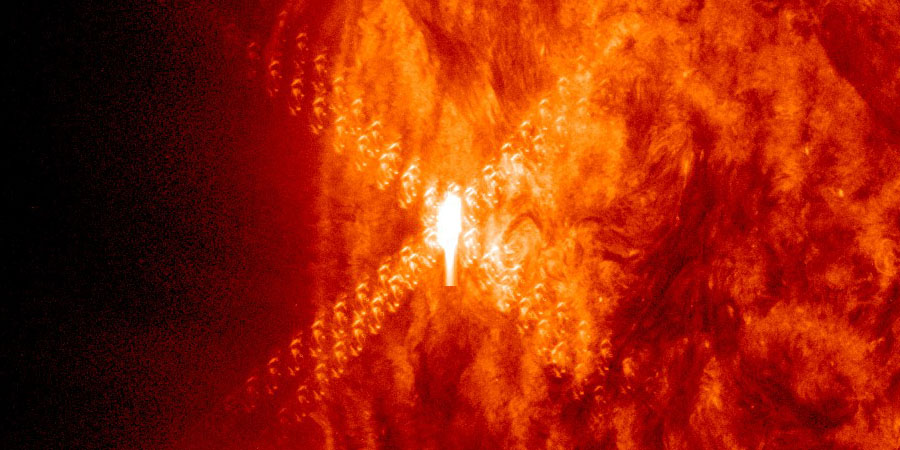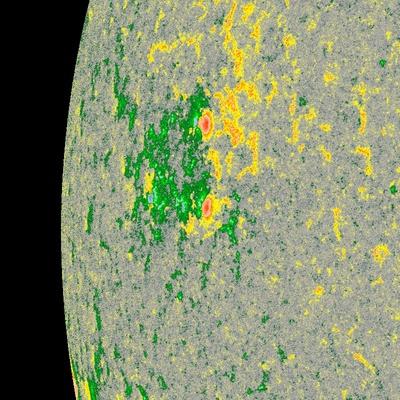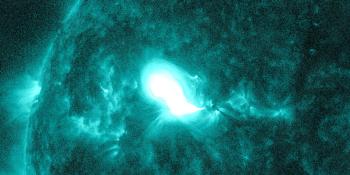M1.2 solar flare from sunspot region 2169
Thursday, 18 September 2014 15:15 UTC

A bit of a surprise today on our nearest star: sunspot region 2169 produced an impulsive M1.2 (R1-minor radio blackout) solar flare that peaked at 08:41 UTC. An unexpected event from a very modest sunspot region. Header image and video: NASA SDO.
The solar flare was associated with an Type II radio burst produced by a shock trough the solar corona with an estimated velocity of 537 km/s. Coronagraph imagery from SOHO/LASCO do not show that there was a Coronal Mass Ejection (CME) associated with this event. The GOES-15 satellite was eclipsed by Earth at the time of the flare which is the reason why there was not an automated alert for this event.
ALERT: Type II Radio Emission Begin Time: 2014 Sep 18 0842 UTC Estimated Velocity: 537 km/s
Sunspot region 2169
Sunspot region 2169 is actually a very simple sunspot region and that is why this event came as a surprise. It is unlikely that this sunspot region could produce more solar flares of this magnitude. All the other sunspot regions on the disk are also unremarkable.


Thank you for reading this article! Did you have any trouble with the technical terms used in this article? Our help section is the place to be where you can find in-depth articles, a FAQ and a list with common abbreviations. Still puzzled? Just post on our forum where we will help you the best we can!
Latest news
Latest forum messages
Support SpaceWeatherLive.com!
A lot of people come to SpaceWeatherLive to follow the Sun's activity or if there is aurora to be seen, but with more traffic comes higher server costs. Consider a donation if you enjoy SpaceWeatherLive so we can keep the website online!

Space weather facts
| Last X-flare | 2024/11/06 | X2.39 |
| Last M-flare | 2024/11/25 | M1.9 |
| Last geomagnetic storm | 2024/11/10 | Kp5+ (G1) |
| Spotless days | |
|---|---|
| Last spotless day | 2022/06/08 |
| Monthly mean Sunspot Number | |
|---|---|
| October 2024 | 166.4 +25 |
| November 2024 | 145.2 -21.2 |
| Last 30 days | 156.1 +6.1 |


